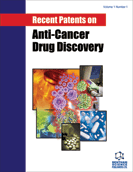
Abstract
Specific elimination of tumor cells by replication-competent viral vectors is mediated through active viral replication, spread in tumor tissue and direct cytopathic effects. In addition, immune responses are induced against virally infected tumor cells. Recently, oncolytic vectors were constructed with mutations in neurovirulence genes or DNA synthesis genes. Viral replication should only be restricted to malignant cells to prevent severe viral disease. These constructed vectors terminate cells by mechanisms different from standard anti-cancer therapies; they offer another treatment modality which can be used in combination with chemotherapy, radiotherapy and gene therapies with additive or synergistic effects. Combination therapies are usually necessary to control tumorigenic diseases. Inhibiting angiogenesis represents another new field in current anticancer treatment development. Combining an oncolytic virus with antiangiogenesis is able to potentiate both treatment effects compared to each treatment modality alone in both primary and advanced disease. This combination might be beneficial for cancer patients in the future. We have also outlined some relevant patents.
Keywords: Antiangiogenesis, cancer, combination therapy, oncolytic virus, patent, viral replication
Recent Patents on Anti-Cancer Drug Discovery
Title:Fighting Fire with Fire: A Patent for the Combined Application of Oncolytic Herpes Viruses and Antiangiogenic Agents in the Battle Against Human Cancers
Volume: 10 Issue: 2
Author(s): Matthias Karrasch and Christoph Rehfuess
Affiliation:
Keywords: Antiangiogenesis, cancer, combination therapy, oncolytic virus, patent, viral replication
Abstract: Specific elimination of tumor cells by replication-competent viral vectors is mediated through active viral replication, spread in tumor tissue and direct cytopathic effects. In addition, immune responses are induced against virally infected tumor cells. Recently, oncolytic vectors were constructed with mutations in neurovirulence genes or DNA synthesis genes. Viral replication should only be restricted to malignant cells to prevent severe viral disease. These constructed vectors terminate cells by mechanisms different from standard anti-cancer therapies; they offer another treatment modality which can be used in combination with chemotherapy, radiotherapy and gene therapies with additive or synergistic effects. Combination therapies are usually necessary to control tumorigenic diseases. Inhibiting angiogenesis represents another new field in current anticancer treatment development. Combining an oncolytic virus with antiangiogenesis is able to potentiate both treatment effects compared to each treatment modality alone in both primary and advanced disease. This combination might be beneficial for cancer patients in the future. We have also outlined some relevant patents.
Export Options
About this article
Cite this article as:
Karrasch Matthias and Rehfuess Christoph, Fighting Fire with Fire: A Patent for the Combined Application of Oncolytic Herpes Viruses and Antiangiogenic Agents in the Battle Against Human Cancers, Recent Patents on Anti-Cancer Drug Discovery 2015; 10 (2) . https://dx.doi.org/10.2174/1574892810666150330152029
| DOI https://dx.doi.org/10.2174/1574892810666150330152029 |
Print ISSN 1574-8928 |
| Publisher Name Bentham Science Publisher |
Online ISSN 2212-3970 |
 32
32 3
3 2
2 2
2
- Author Guidelines
- Graphical Abstracts
- Fabricating and Stating False Information
- Research Misconduct
- Post Publication Discussions and Corrections
- Publishing Ethics and Rectitude
- Increase Visibility of Your Article
- Archiving Policies
- Peer Review Workflow
- Order Your Article Before Print
- Promote Your Article
- Manuscript Transfer Facility
- Editorial Policies
- Allegations from Whistleblowers
Related Articles
-
Differentiation of High-grade Gliomas from Brain Metastases Using Tissue Similarity Maps (TSMs) Based Relative Cerebral Blood Volume Values
Current Medical Imaging Nanoplatforms for Delivery of siRNA to the Eye
Current Pharmaceutical Design MARK1 is a Novel Target for miR-125a-5p: Implications for Cell Migration in Cervical Tumor Cells
MicroRNA Mechlorethamine based Drug Structures for Intervention of Central Nervous System Tumors
Central Nervous System Agents in Medicinal Chemistry Neuropathic Pain and Lung Delivery of Nanoparticulate Drugs: An Emerging Novel Therapeutic Strategy
CNS & Neurological Disorders - Drug Targets Novel Patents Targeting Interleukin-17A; Implications in Cancer and Inflammation
Recent Patents on Anti-Cancer Drug Discovery A Multi-targeted Natural Flavonoid Myricetin Suppresses Lamellipodia and Focal Adhesions Formation and Impedes Glioblastoma Cell Invasiveness and Abnormal Motility
CNS & Neurological Disorders - Drug Targets Receptor Tyrosine Kinases Take a Direct Route to Mitochondria: An Overview
Current Protein & Peptide Science Nanomedicines Based Drug Delivery Systems for Anti-Cancer Targeting and Treatment
Current Drug Delivery One-Step Synthesis of 1H-1,2,3-Triazol-1-Ylmethyl-2,3-Dihydronaphtho[1,2-b]furan- 4,5-Diones
Current Organic Synthesis Use of Topiceuticals (Topically Applied, Peripherally Acting Drugs) in the Treatment of Chronic Pain
Current Drug Therapy Editorial [Hot topic: Role of Inflammation in Neurological and Psychiatric Disorders (Guest Editor: Mohtashem Samsam)]
Anti-Inflammatory & Anti-Allergy Agents in Medicinal Chemistry Evidence for Complex Binding Profiles and Species Differences at the Translocator Protein (TSPO) (18 kDa)
Current Molecular Medicine Anticancer α-Helical Peptides and Structure / Function Relationships Underpinning Their Interactions with Tumour Cell Membranes
Current Protein & Peptide Science PI3K/Akt/mTOR Pathway Inhibitors in Cancer: A Perspective on Clinical Progress
Current Medicinal Chemistry Crypteins - An Overlooked Piece of Peptide Systems
Current Protein & Peptide Science Recent Advances in Application of Poly-Epsilon-Caprolactone and its Derivative Copolymers for Controlled Release of Anti-Tumor Drugs
Current Cancer Drug Targets Overcoming the Hurdles of Tumor Immunity by Targeting Regulatory Pathways in Innate and Adaptive Immune Cells
Current Pharmaceutical Design Identifying S100B as a Biomarker and a Therapeutic Target For Brain Injury and Multiple Diseases
Current Medicinal Chemistry Dietary and Plant Polyphenols Exert Neuroprotective Effects and Improve Cognitive Function in Cerebral Ischemia
Recent Patents on Food, Nutrition & Agriculture


























